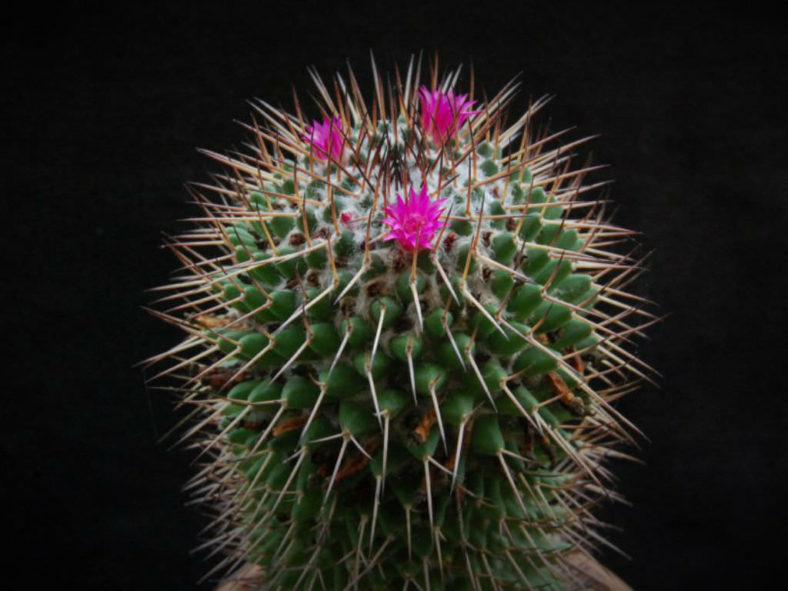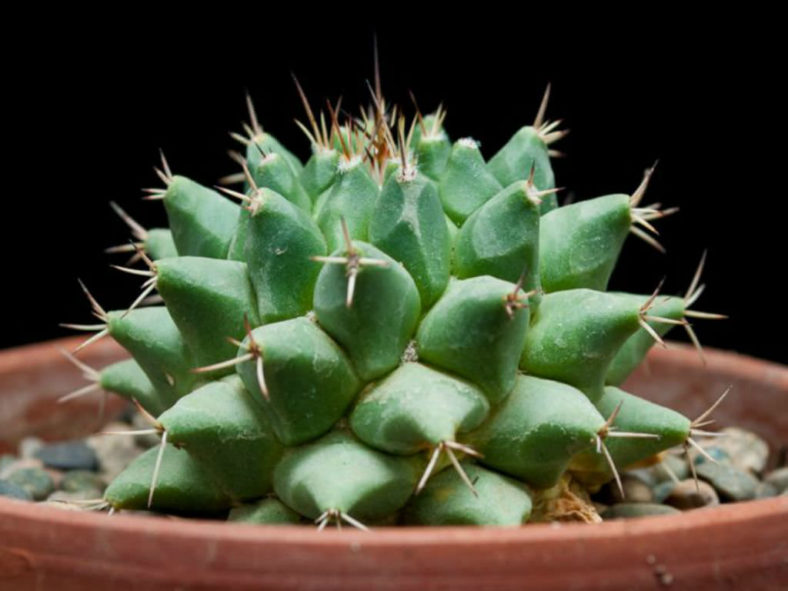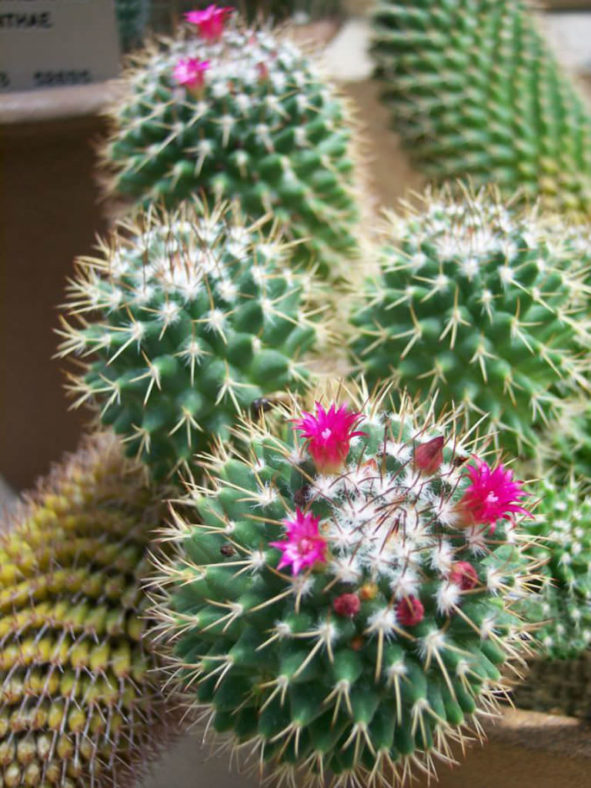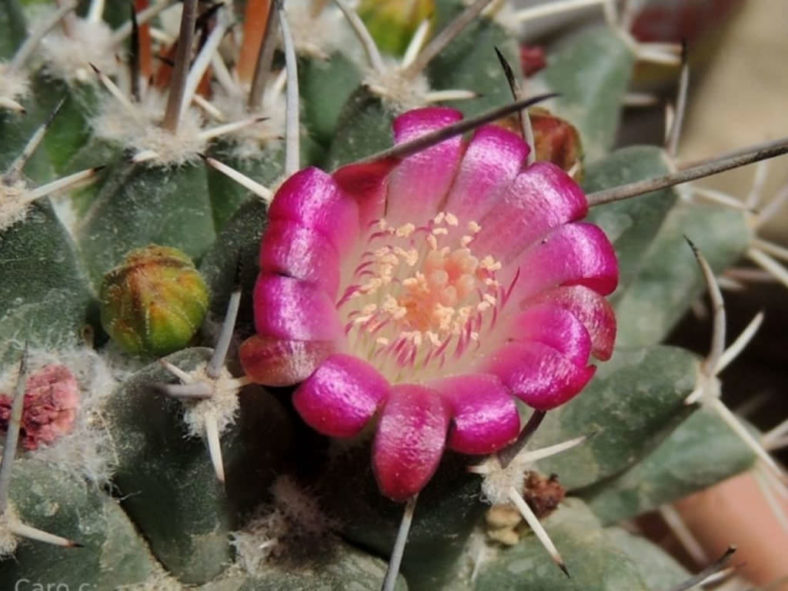Scientific Name
Mammillaria polythele Mart.
Synonym(s)
Cactus nudus, Cactus polythele, Mammillaria polythele subsp. polythele, Neomammillaria polythele
Scientific Classification
Family: Cactaceae
Subfamily: Cactoideae
Tribe: Cacteae
Subtribe: Cactinae
Genus: Mammillaria
Etymology
The specific epithet "polythele" (pronounced pol-lee-THEL-e) means "many nipples" and refers to the tubercles present on the stem.
Origin
Mammillaria polythele is native to Mexico. It occurs from Jalisco to Veracruz at elevations that range from 5,580 to 7,870 feet (1,700 to 2,400 m).
Description
Mammillaria polythele is a cactus with a cylindrical, solitary stem covered with pyramidal to conical tubercles with clusters of spines at the tips and abundant wool in the axils. The stem is dull green to dark bluish-green, usually erect or sometimes sprawling, and can grow up to 2 feet (60 cm) tall and 4 inches (10 cm) in diameter. The spines are unequal, pale to dark brown, sometimes reddish brown, and can measure up to 0.7 inches (1.7 cm) long. Each areole bears 2 to 4 central spines. The radial spines are absent.
The flowers are rose-colored to pinkish-purple and can reach up to 0.8 inches (2 cm) in length and 0.6 inches (1.5 cm) in diameter. They appear in summer, forming a ring at the top of the stem.

Hardiness
USDA hardiness zones 10a to 11b: from 30 °F (−1.1 °C) to 50 °F (+10 °C).
How to Grow and Care
To encourage better flowering, allow the plants to enjoy a cooling period in the winter and suspend watering. Unlike many other cacti, which use their ribs as storage devices, Mammillaria features raised tubercles, from which spines emerge. When you water, the tubercles expand to allow for increased water storage. The flowers emerge from the axils of these tubercles on the previous year's growth, which accounts for their interesting halo effect. The cactus must not be exposed to prolonged dampness or standing water. Never let your cactus sit in a dish of water. Lastly, ensure to fertilize during the growing season for the best results.
Repot as needed, preferably during the warm season. To repot Mammillaria, ensure the soil is dry before repotting, then gently remove the pot. Knock away the old soil from the roots, removing any rotted or dead roots. Treat any cuts with a fungicide. Place the plant in its new pot and backfill it with potting soil, spreading the roots as you repot. Leave the plant dry for a week or so, then start watering lightly to reduce the risk of root rot.
See more at How to Grow and Care for Mammillaria.
Subspecies
Links
- Back to genus Mammillaria
- Succupedia: Browse succulents by Scientific Name, Common Name, Genus, Family, USDA Hardiness Zone, Origin, or cacti by Genus
Photo Gallery
Click on a photo to see a larger version.


